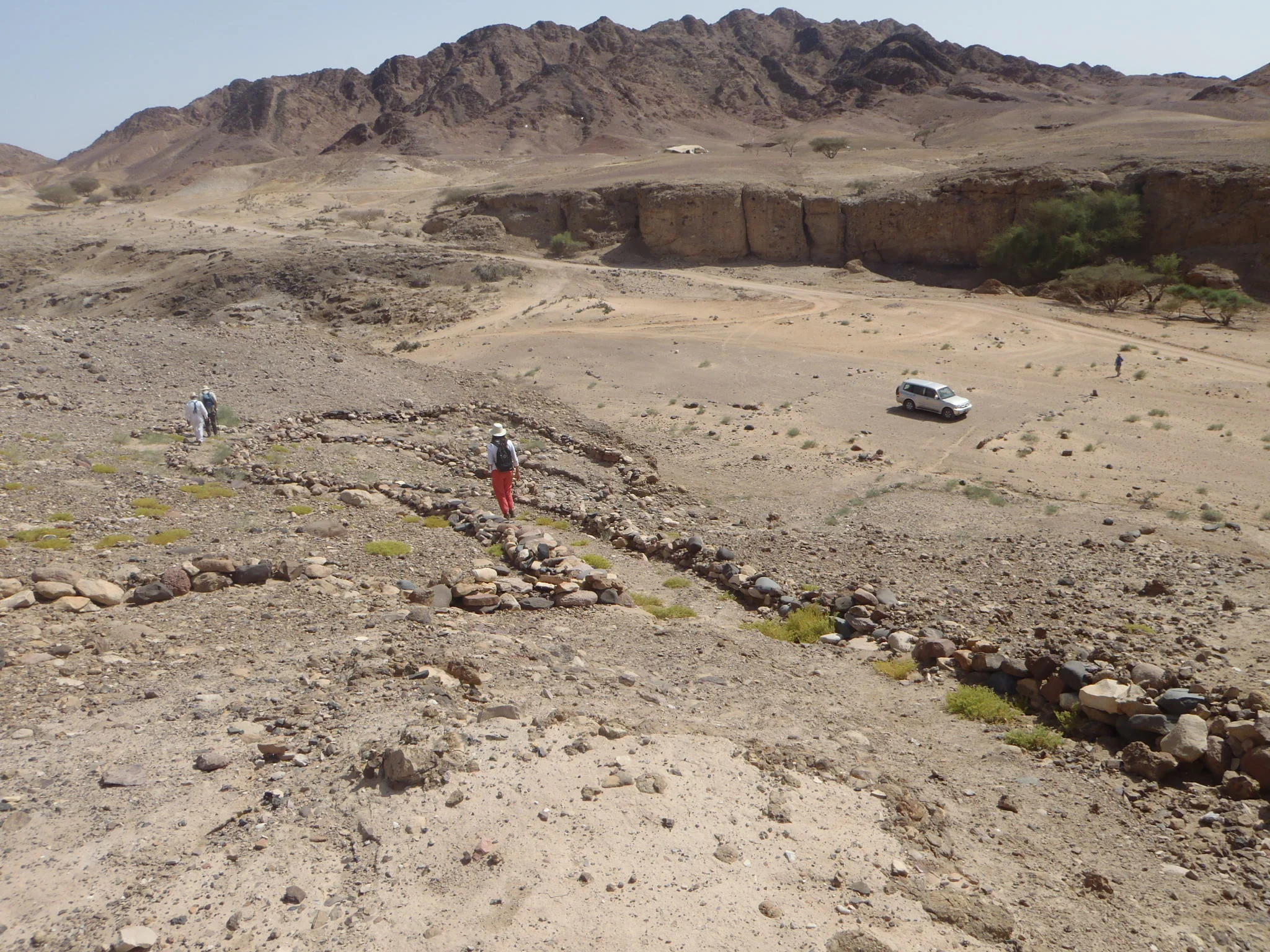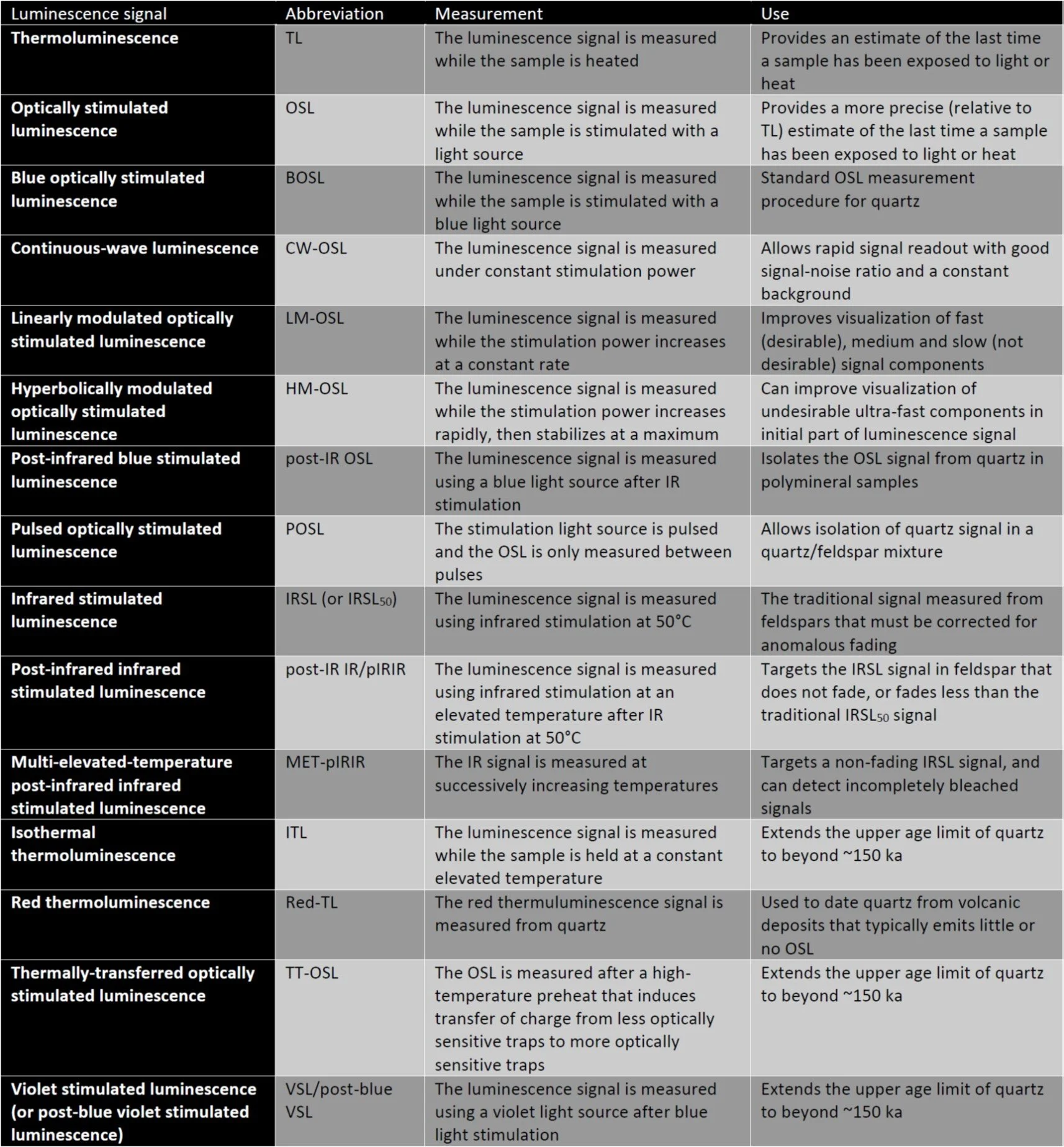Luminescence signals - a cheat sheet
/
Despite the fact that the vast majority of samples we date here at DRILL are dated using optically stimulated luminescence (OSL) techniques, some colleagues still refer to our lab as “the TL lab”. This is because thermoluminescence (TL) dating techniques, still used today, are the precursors to “optically stimulated luminescence” dating techniques developed more recently in the 1980’s. TL measures the luminescence of a sample emitted when it is exposed to heat, and OSL measures the luminescence of a sample when it is exposed to light. Both methods can determine the last time a sample has been exposed to light or heat, however OSL is now typically used to determine a burial age – the time since the sample was exposed to the sun.
But it does not end there….
In recent decades, a myriad of luminescence signals with distinct characteristics have been explored. Which signal is most applicable to your project depends on the expected age of the sample, the mineral(s) to be dated, the event to be dated (i.e. last light/heat exposure), the optical properties of the minerals, as well as their depositional history. Here we provide a cheat-sheet for luminescence signal jargon commonly seen in the literature. This list is always growing, so don’t hesitate to let us know if we’re missing one!

